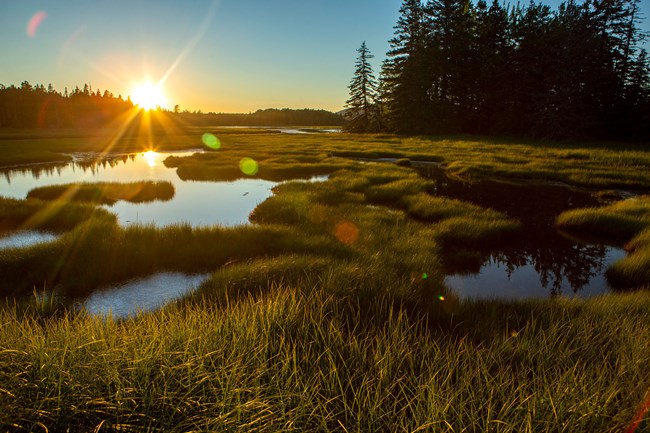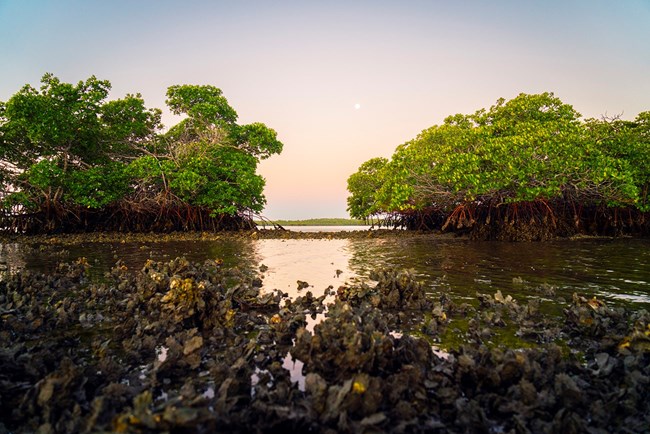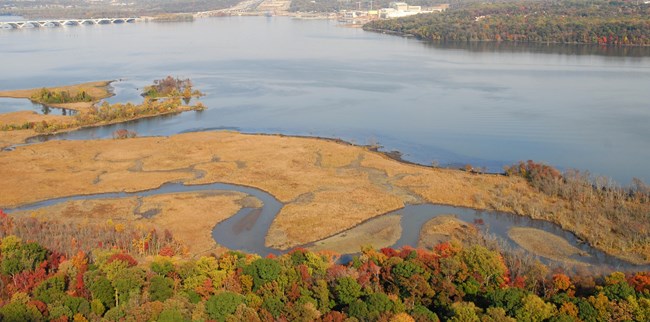Tidal wetlands are dynamic envrionments that are regularly flooded and drained by ocean tides. They are found along our coastlines and are crucial for coastal ecosystems. Tidal wetlands can range from saltwater to freshwater. The following are some examples of tidal wetlands found in national parks.

Ashley L. Conti / Friends of Acadia
Salt Marshes
Salt Marshes develop near river mouths, behind barrier islands, in bays, on coastal plains, or in other areas affected by tides and protected from the full force of the surf. Typically vegetated by grasses and other emergent plants adapted to salt water, they can range from narrow fringes on steep shorelines to nearly flat expanses several miles wide. Salt marshes are among the most productive ecosystems in the world and are home to a wide variety of animals like oysters, crabs, shrimp, fish, birds, and mammals. They are especially important as nursery areas for the larval and juvenile stages of many fish and shellfish species that spend their adult lives in more open estuary or ocean environments.

NPS / Anthony Sleiman
Mangrove Swamps
Mangrove Swamps replace tidal salt marshes in subtropical and tropical regions of the world. The word "mangrove" refers to the salt-tolerant trees that dominate these wetlands. In the U.S., they are mainly found on the southern tip of Florida, including at Big Cypress National Preserve, Biscayne National Park, and Everglades National Park, and along the coasts of the Hawaiian Islands. Small mangrove stands are also scattered as far north as Louisiana and Georgia. These coastal wetlands are home to many species of fish, birds, reptiles, crabs, oysters, and other animals. They export organic matter that supports aquatic food webs in adjacent estuaries, and they help protect inland areas from storm surges during tropical storms or hurricanes.
NPS photo
Tidal Freshwater Marshes
Tidal Freshwater Marshes form inland from salt marshes and mangrove swamps and along some tidal rivers. In the U.S, they are mainly found on the Atlantic and Gulf Coasts. Though they are freshwater environments, these marshes are still affected by the rise and fall of ocean tides. Plant communities tend to be highly productive and very diverse in these wetlands. For example, Dyke Marsh at George Washington Memorial Parkway near Washington, D.C. has more than 360 different plant species, including water lilies, wild rice, and arrowheads. Tidal freshwater marshes provide important habitat for a wide variety of bird species, and often are premier destinations for bird enthusiasts.Last updated: May 16, 2025
